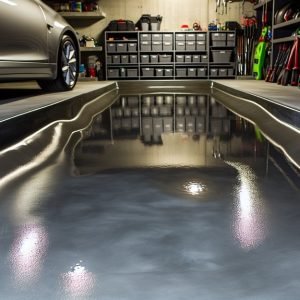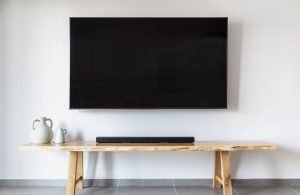Last Updated on October 30, 2025 by teamobn
Choosing between double or triple pane windows can feel like a puzzle for homeowners. The core difference lies in how well each unit traps heat and blocks drafts. More trapped air layers translate to stronger insulation and smaller energy bills. The right pick depends on climate, budget, and the comfort level you expect.
This guide breaks down the science and shows which option delivers the best thermal shield.
Contents
How Multi-Pane Insulation Works
Glass alone is a poor insulator, so builders add space between two or three panes and fill that gap with inert gas. Argon or krypton slows heat transfer far better than plain air because their molecules move less. Low-emissivity coatings line one or more inner faces and bounce infrared energy back toward its source, keeping winter warmth inside and summer heat outside.
Warm-edge spacers hold the panes apart, yet they’re made of thermally resistant foam or stainless steel that stops a metal frame from acting like a radiator. Each layer tackles a different part of the heat-loss puzzle: conduction through glass, convection in the gap, and radiation across the cavity.
Together these energy efficient windows form a tight envelope that keeps indoor surfaces close to room temperature and ends that chilly draft you feel near older windows. Better insulation also raises the interior glass temperature, which cuts condensation and the mold risk that follows. When panes stay clear, daylight pours in without cold spots undermining comfort.
Thermal Performance Benchmarks
Thermal ratings give you the hard numbers behind glazing performance. These benchmarks show how each pane count handles heat flow in real-world climates.
U-Factor and R-Value
- U-factor tracks heat escaping per square foot each hour. Lower scores mean stronger insulation.
- Typical double-pane units sit near 0.30 with an R-value of about 3.3.
- Energy Star v7.0 in northern zones demands U ≤ 0.22; triple-pane windows reach 0.15 without exotic frames.
- The 2025 “Most Efficient” tier pushes U ≤ 0.20, a mark triple-panes using argon or krypton routinely beat.
Solar Heat-Gain Coefficient
- SHGC shows the share of sunlight that turns into indoor heat.
- Hot climates aim for SHGC ≤ 0.25 to curb cooling loads, while cold regions welcome values around 0.40 for passive warmth.
- Low-E layers on triple glass let makers fine-tune SHGC without raising U-factor.
Condensation Resistance Index
- CRI predicts how warm the interior glass stays on freezing nights.
- Double panes average 55; triple panes often top 60, keeping sashes dry at −10 °F.
- Higher CRI also shields frames from mold and paint damage.

Comfort Perks Beyond Heat Retention
Comfort drifts far past simple heat savings. Added glass layers work like quiet partners that keep rooms calm, balanced, and bright while protecting the things you love indoors.
Insulated glazing does more than guard heat; it shapes sound, light, and indoor air quality. These perks make daily living smoother, healthier, and gentler on belongings.
Quieter Days and Nights
- Thicker glass and argon gaps soak up traffic roar and barking dogs for calmer rooms.
- City noise drops by as much as 10 dB, letting conversations stay clear.
- Kids study without distractions, and remote calls sound professional every time.
- Deeper sleep follows because vibrations that jolt you awake disappear behind the extra glass layers.
Steadier Indoor Temperatures
- Inside pane surfaces stay within two degrees of room air even in a snowstorm.
- No cold downdraft brushes the sofa, so you can read by the window in comfort.
- Furnace cycles less often, smoothing out temperature swings that make rooms feel stuffy.
- Balanced warmth means fewer thermostat fights and happier family members year-round.
Drier Frames and Cleaner Air
- Warmer glass stops dew from puddling on sash corners and sill edges.
- Dry wood and vinyl block mold spores, cutting musty smells and allergy flare-ups.
- Less moisture keeps paint intact, saving you a messy recoat later.
- Curtains stay fresh because damp fabric no longer traps dust mites.
Balanced Humidity for Wood and Instruments
- Stable indoor moisture prevents hardwood floors from cupping or gapping between boards.
- Guitars, pianos, and violins hold tune longer, sparing costly adjustments.
- Photo albums and artwork avoid warping on humid summer afternoons.
- Books keep crisp pages instead of curling at the edges.
Glare and Fade Protection
- Low-E coatings knock out up to 99 % of UV rays without dimming daylight.
- Furniture fabrics and rugs keep their vivid colors far longer.
- Televisions and monitors show richer detail because glare drops to a soft glow.
- You open blinds wide, enjoy natural light, and still protect valuables from bleaching.
Choosing the Right Pane Count for Your Climate
Climate decides how much an extra pane helps. Check local heating and cooling loads before choosing between double vs triple pane windows that meet comfort goals.
Cold Climate Priorities
Long winters and single-digit lows call for maximum insulation. Triple panes with argon or krypton cut U-factors to roughly 0.15, slashing heat loss and stopping icy drafts. Interior glass stays warm, so condensation and frost vanish.
High-solar-gain low-E coatings invite free sunlight without leaking night warmth. Deep frames with insulated spacers seal the whole unit against bitter wind.
Mixed Climate Strategies
Regions that swing from humid summers to frosty winters need balance. Advanced double panes often reach U 0.22 and handle most weather while costing less up front. Low-E layers tuned for midrange solar heat gain trim cooling loads yet still gather winter sun.
Homeowners can upgrade north-facing rooms or bedrooms to triple glass for quiet and extra comfort. Roof overhangs and exterior shades work with the glazing to keep temperatures steady year-round.
Warm Climate Considerations
Cooling dominates where summer highs linger above 90 °F. Double panes with spectrally selective low-E coatings drop the solar heat-gain coefficient near 0.25, blocking glare and unwanted heat.
Frames in light vinyl or fiberglass reflect sunshine and stay cooler than dark aluminum. Airtight installation becomes critical because humid air sneaking through gaps erases any pane advantage. Choosing windows tested for high wind and salt spray also extends service life in coastal zones.
Retrofit Versus New Build
Existing homes with solid frames can accept insert sashes that jump one insulation class without major carpentry. Full replacements cost more but allow deeper triple units and wider spacers for top performance.
New construction offers a clean slate: align window size, orientation, and HVAC capacity from the start. Builders can pair glazing with continuous exterior insulation for a tight, resilient shell. Always review local codes and rebate tiers before signing a contract to be sure the upgrade qualifies for incentives.
Conclusion
Upgrading window insulation pays off in comfort first, savings second. Extra glass layers hush street noise and keep indoor surfaces warm. Proper pane choice also guards frames against condensation and mold. Match your climate, budget, and design plans before ordering. A careful pick today will deliver quieter, drier, and more efficient rooms for decades.






